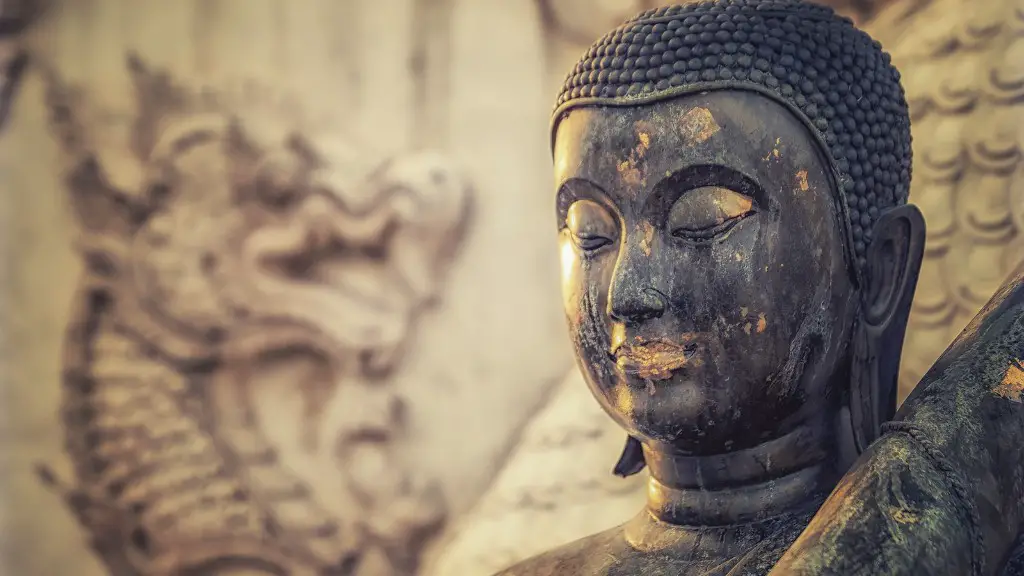Influence of Papal Authority
The Great Schism, also known as the East-West Schism, resulted from an escalating conflict between the Catholic and Orthodox Christian churches in the 11th and 12th centuries. It resulted in a division of the Christian Church into two branches, the Roman Catholic Church and the Eastern Orthodox Church. The Catholic Church believes in the preeminent authority of the pope, while the Orthodox Church believes in the preeminent authority of the Holy Synod in Constantinople.
Since the Great Schism, the Catholic Church has become increasingly hierarchical and centralized, while the Eastern Orthodox Church has remained decentralized. The pope has become the undisputed leader of the Catholic Church, with authority over all Christian churches and believers worldwide. Yet the Orthodox Church has no single leader, relying on its councils and synods for decisions.
The Great Schism had a huge impact on Christianity. In the Middle Ages, it inaugurated a century-long period of struggles between the two Christian branches. It deepened the rift between Catholics and Orthodox, and it eroded the sense of unity that had once bound the Christian Church as a whole.
In addition, the Schism gave rise to a long list of theological disputes. These disputes had a powerful influence on Christian doctrine, contributing to the development of new schools of thought and movements such as Protestantism. This divergence of faith ultimately fragmented the Christian Church even further, leading to its eventual division into the denominations we know today.
Theological Differences
Theological differences between the Catholic and Orthodox branches of Christianity were at the heart of the Great Schism. The two churches differed significantly in their interpretation of the divine nature of Christ – the doctrine known as the Filioque – and in their views of the authority and supremacy of the pope. The Catholics viewed the pope as the head of all the Christian churches, while the Orthodox viewed the patriarch of Constantinople as merely one among many.
The Great Schism also had implications for other theological debates. In the Catholic Church, it led to an emphasis on ecclesiastic authority, promoting the idea that only the pope had the power to interpret the Scriptures and declare dogma. This reinforced the Catholic Church’s strict hierarchical structure and hardened its resistance to theological pluralism.
In contrast, the Orthodox Church saw the Schism as an opportunity to explore a wider range of interpretations of the Gospel. Orthodox theologians began to formulate their own doctrines, including theories on free will, predestination, grace and the nature of the Holy Trinity. This gave the Orthodox Church a sense of unity and a distinct theological identity.
Political Reasons
While theological differences were a major cause of the Great Schism, political factors contributed to the division as well. The Eastern Roman Empire had been in decline since the 8th century, and the pope had assumed greater political power in the West. The pope was also eager to secure his own authority over the Empire’s eastern provinces, particularly those in the Mediterranean region. The Orthodox Church, therefore, saw the pope’s claims of universal primacy as a threat to its own power and authority.
The Great Schism also had a significant impact on the political landscape of Europe. As the Catholic and Orthodox Churches divided, their political power weakened, paving the way for the emergence of new states. In the East, the Slavic peoples began to assert their independence from the Byzantine Empire, establishing a number of new nations such as Russia, Poland and Serbia. In the West, the centralization of the Catholic Church made way for the formation of new national monarchies.
Social & Cultural Impact
The Great Schism deeply affected the social and cultural life of the Christian world. The lack of a unified Church caused a sharp decline in religious unity, leaving people divided by sectarian strife and animosity. This disruption of Christian unity paved the way for the rise of nationalism, particularly in the reign of Charlemagne, who sought to unify the various Germanic tribes under one Christian banner.
The split between the Catholic and Orthodox Churches also had a profound impact on European culture. After the Schism, the two branches of Christianity adopted different approaches to art and literature, leading to a distinctive East-West divide in visual and literary styles. This contributed to the emergence of medieval Europe as we know it today – a region divided into distinct cultural regions with their own religions, languages and customs.
Separation of Faiths
The Great Schism was an event of tremendous importance in the history of Christianity. The split between the Catholic and Orthodox Churches created a lasting rift between the two branches of faith, profoundly affecting the religious landscape of Europe and the entire world. The Schism inaugurated a period of religious conflict and division that would continue to shape the development of Christianity for centuries to come.
Sacraments & Traditions
The Great Schism also gave rise to some differences between Catholic and Orthodox practices. After the split, the two Churches developed different ways of celebrating the sacraments, such as the Eucharist, Confirmation and Anointing of the Sick. The two branches also saw divergence in their respective rituals and prayers. The development of these differences was an unintended consequence of the Schism, yet it would come to define the two branches of Christianity.
Literature & Education
The Great Schism impacted scholarship and education. In the wake of the split, theologians and theologians in both the Catholic and Orthodox camps began to produce literature that reflected their own interpretation of the scriptures. The result was a dramatic surge in scholarly activity, as Catholic and Orthodox theologians sought to defend their own teachings and attack those of their opponents.
The Schism also had a profound effect on education. The Catholic Church sought to tighten its grip on learning, seeking to guard against heresy and promote the teachings of its own theology. By contrast, the Orthodox Church embraced the search for knowledge, encouraging its theologians to explore a wider range of interpretations and theories. This divergence in approach laid the foundations for the development of two distinct educational systems.
Rituals & Customs
The Great Schism also shaped the rituals and customs of Catholic and Orthodox Christianity. As the two branches of the faith developed their own traditions, the differences between them grew even more pronounced. Perhaps the most obvious example of this is the divergence in the way Catholics and Orthodox celebrate the Easter holiday. Catholic Easter celebrations are characterized by Mass and the tradition of eating a hot cross bun, while Orthodox Easter celebrations are marked by colorful processions and the tasting of special foods.
The Great Schism had an indelible impact on Christianity, shaping the faith in ways that reverberate to this day. From its inception more than a thousand years ago, the Schism has served as a reminder of the power of faith and the importance of unity among Christians.
Canon Law & Authority
The effects of the Great Schism can be seen in the church laws and authority each branch established. In the centuries that followed the Schism, the Catholic Church tightened its grip on those who did not accept its doctrines and bishoprics. This led to the development of a canon law to codify church teachings and ensure uniformity among believers. By contrast, the Eastern Orthodox Church eschewed centralized authority, relying instead on local councils and synods for direction.
The Schism also contributed to the growth of religious intolerance throughout the Christian world. The Catholic Church in particular adopted a stance of absolute condemnation of any beliefs or practices outside its own orthodoxy, leading to centuries of dispute between the two branches of Christianity. This led to an ever-growing gulf between Catholics and Orthodox, one that would only deepen in the tumultuous centuries ahead.
Effect on Mission & Doctrine
The Great Schism also had an impact on the mission and doctrine of the Christian Church. After the Schism, the Catholic Church continued to spread its version of Christianity to the furthest reaches of the world, while the Orthodox Church maintained its presence in Europe and the Middle East. This resulted in a divergence in mission and belief, as each branch sought to propagate its own teachings and defend its own doctrines.
In the centuries since the Schism, the Catholic Church has taken a strong stance against any deviation from its beliefs, while the Orthodox Church has remained open to theological exploration and debate. This divergence in attitude has had a lasting effect on the Christian faith, contributing to the growth of Protestantism and the spread of other forms of Christianity.
The Great Schism irrevocably changed Christianity, creating two branches of faith that remain separate to this day. The rift between the Catholic and Orthodox Churches has had a profound effect on the history of the faith, shaping the doctrines, rituals and customs of the Christian world.

